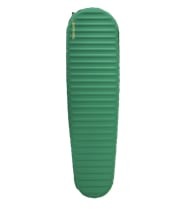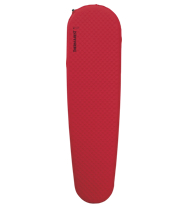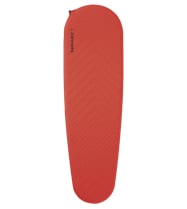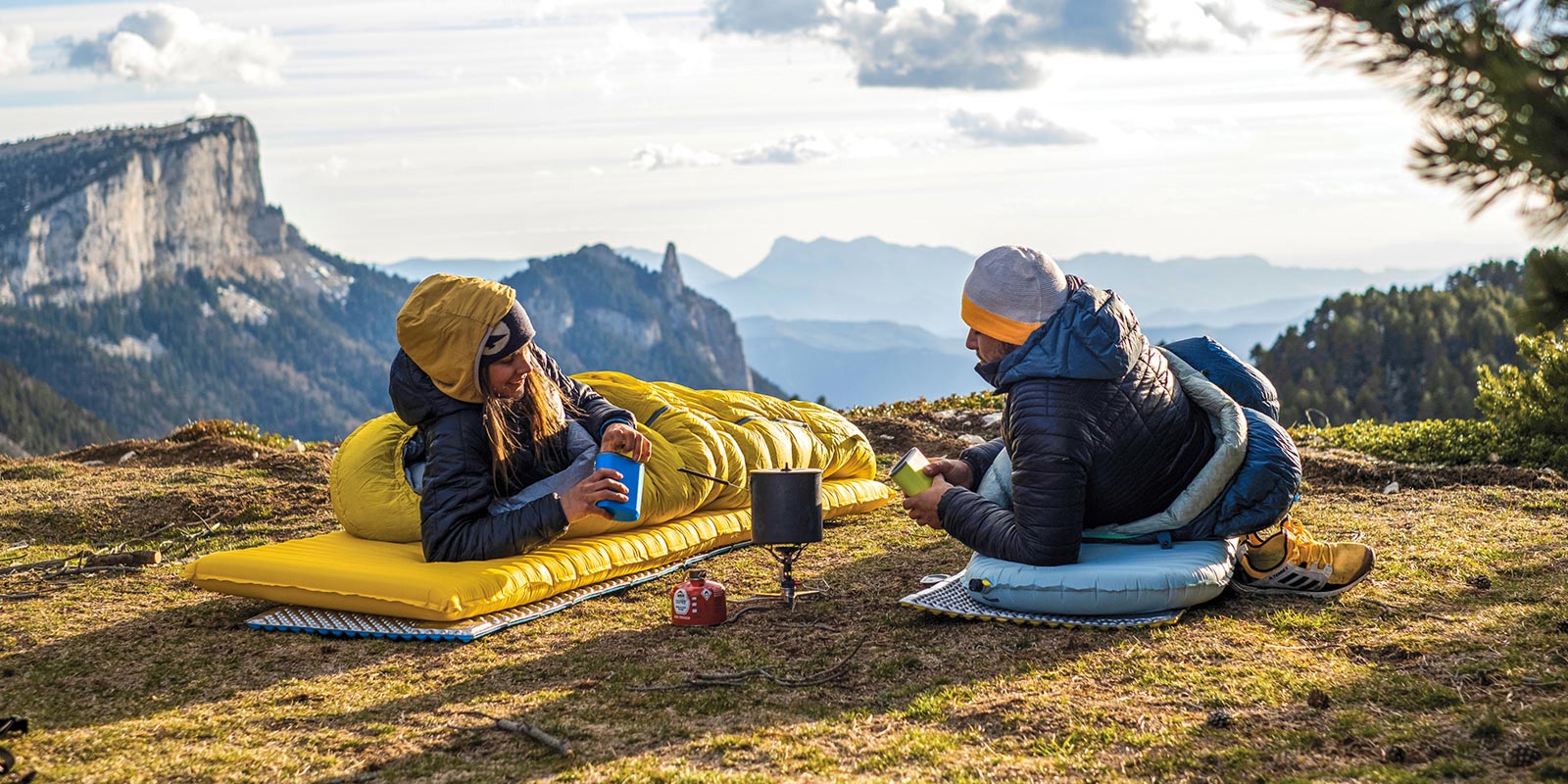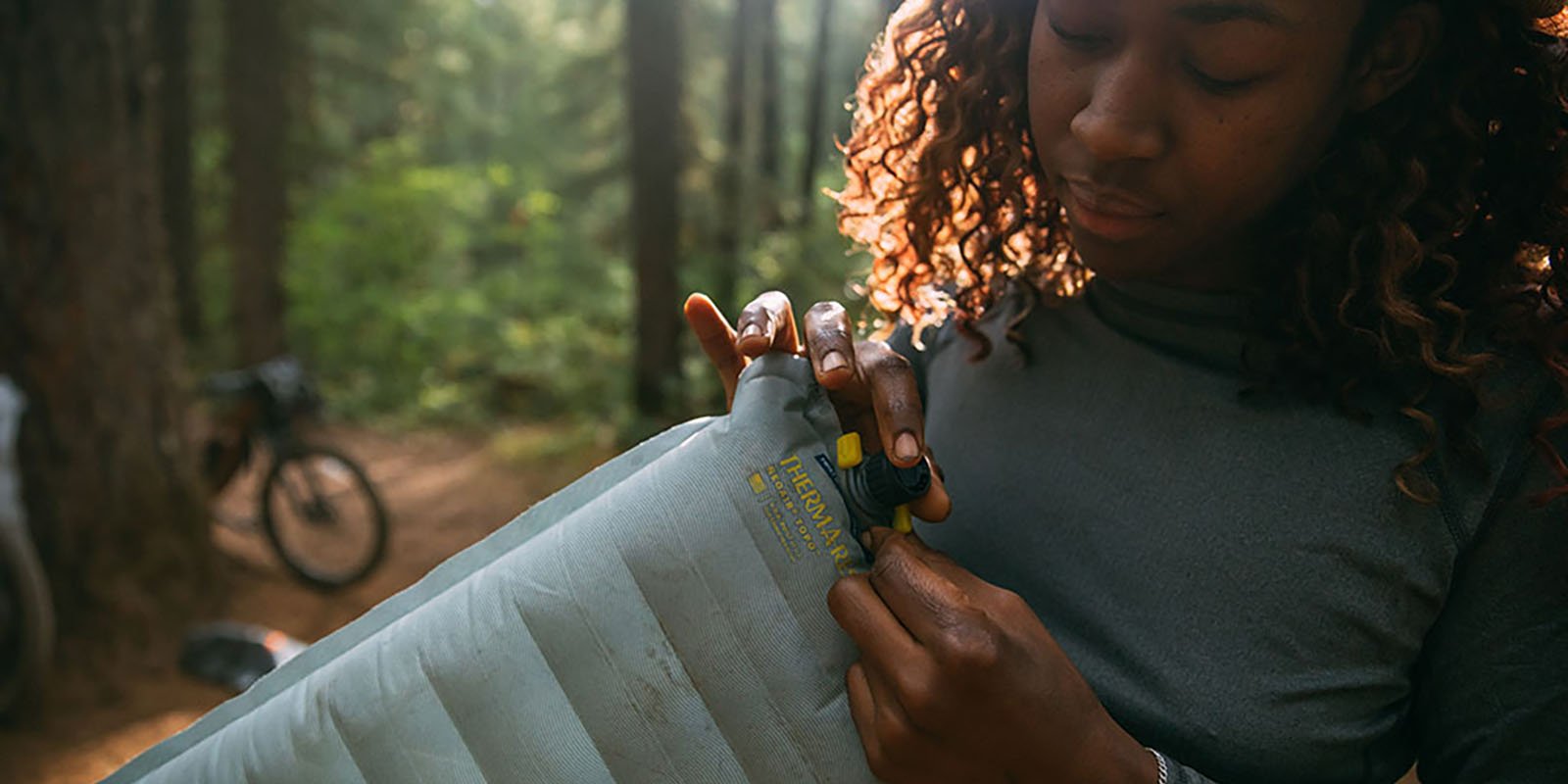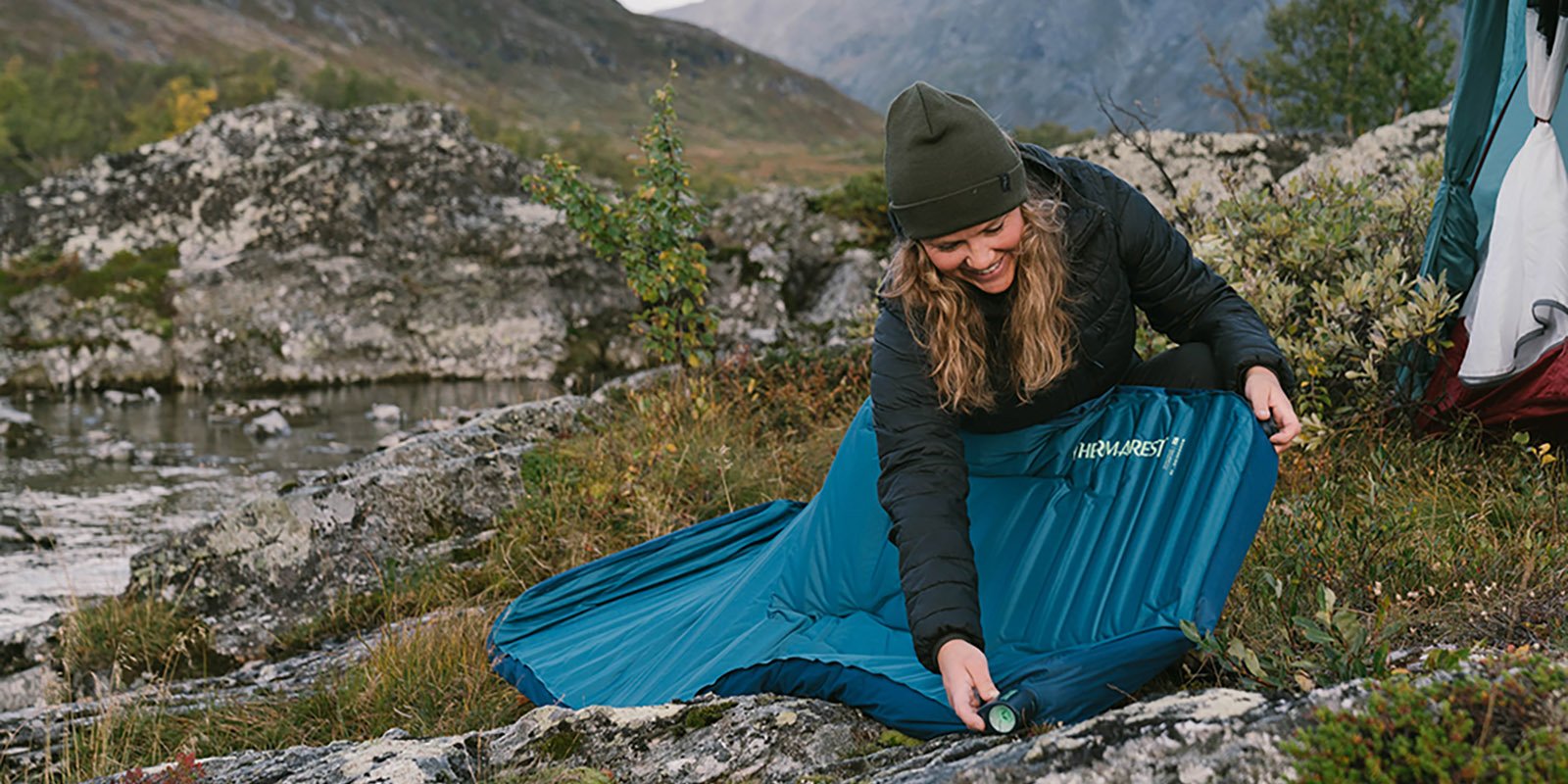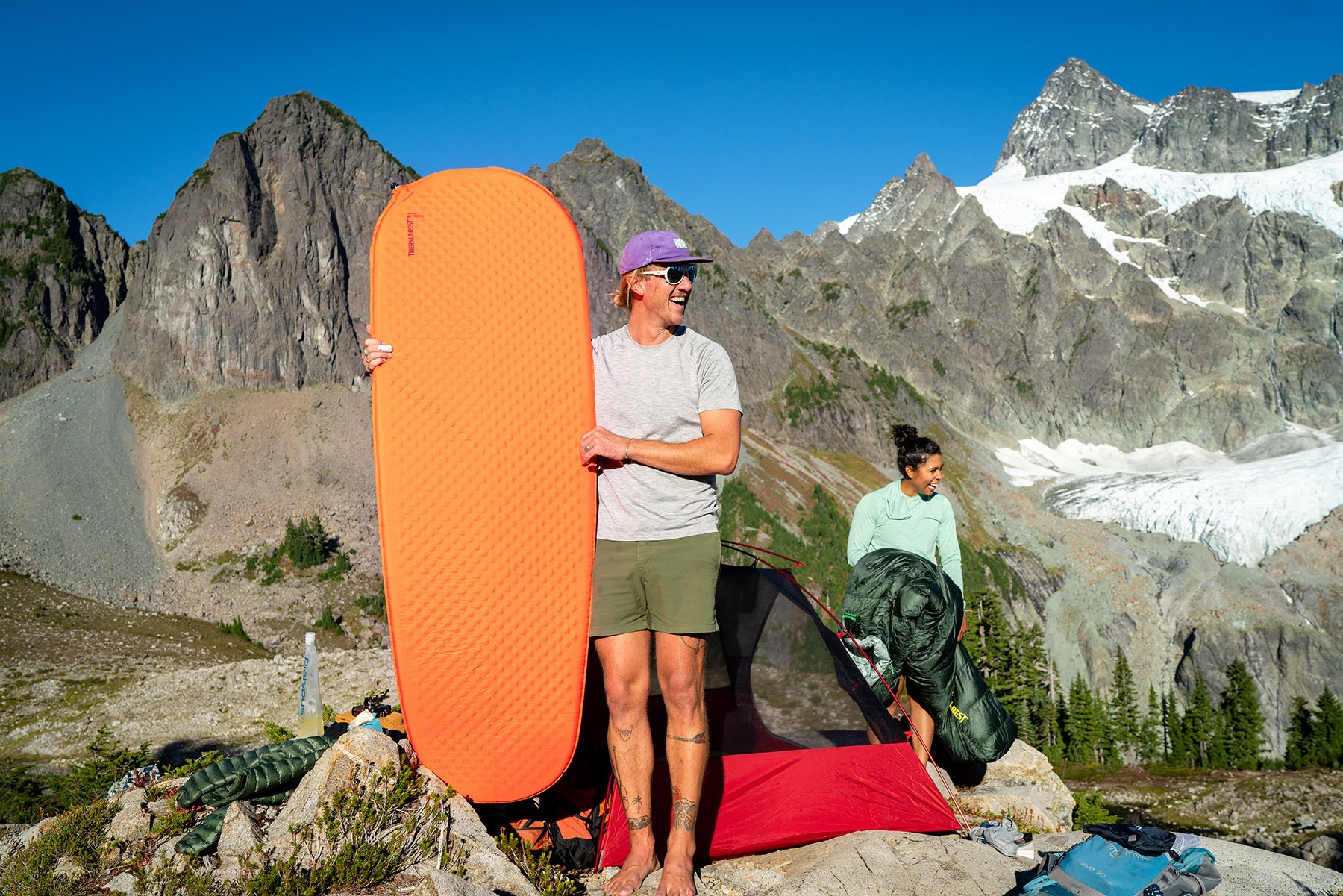During Seattle’s economic downturn in the 1970’s, a pair of out-of-work Boeing engineers were given a friendly challenge for their downtime.
“I wanted a better mattress,” remembers John Burroughs, a fellow climber who was fed up with the day’s thin, closed-cell foam pads. A better night on the ground would mean more energy for the trio’s adventures in the mountains.
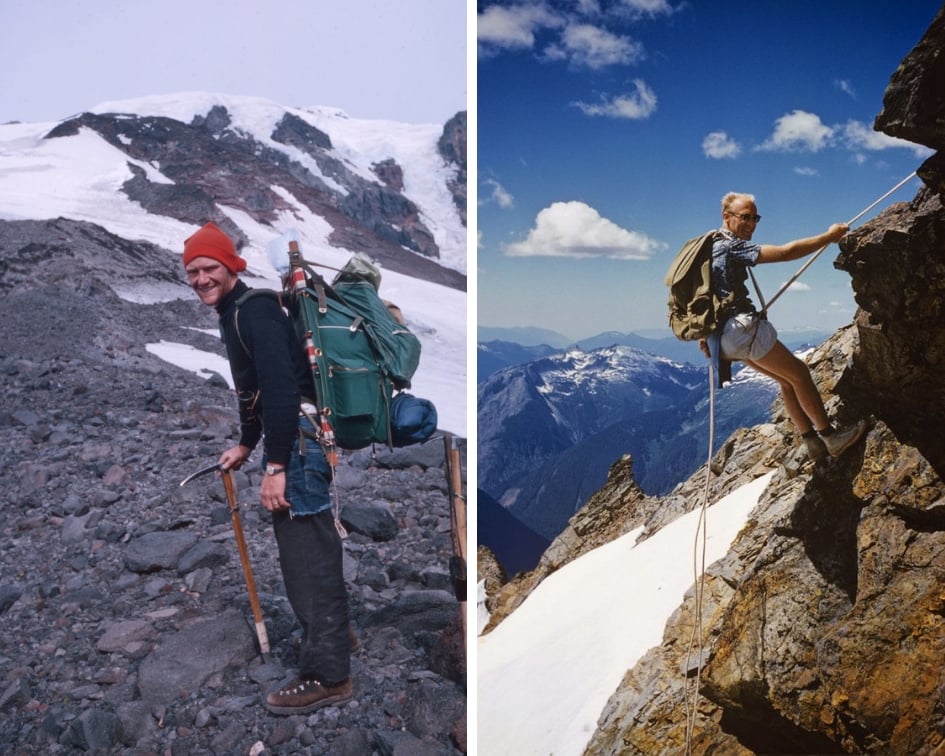
One day while gardening, a member of that trio, Jim Lea, had a breakthrough moment. After hearing the air escape from his leaky foam ground cushion, he saw an opportunity. What if that air could be controlled? You’d need an airtight barrier around the foam and a way to let the air in and out. Check. After a few crude experiments of sealing open cell foam inside airtight fabric and adding a valve, the world of outdoor comfort had shifted on its foundation.
The rest, as they say, is history. By 1972, Burroughs had dubbed their final prototype the “Therm-a-Rest”.
The First Self Inflating Camping Mattress
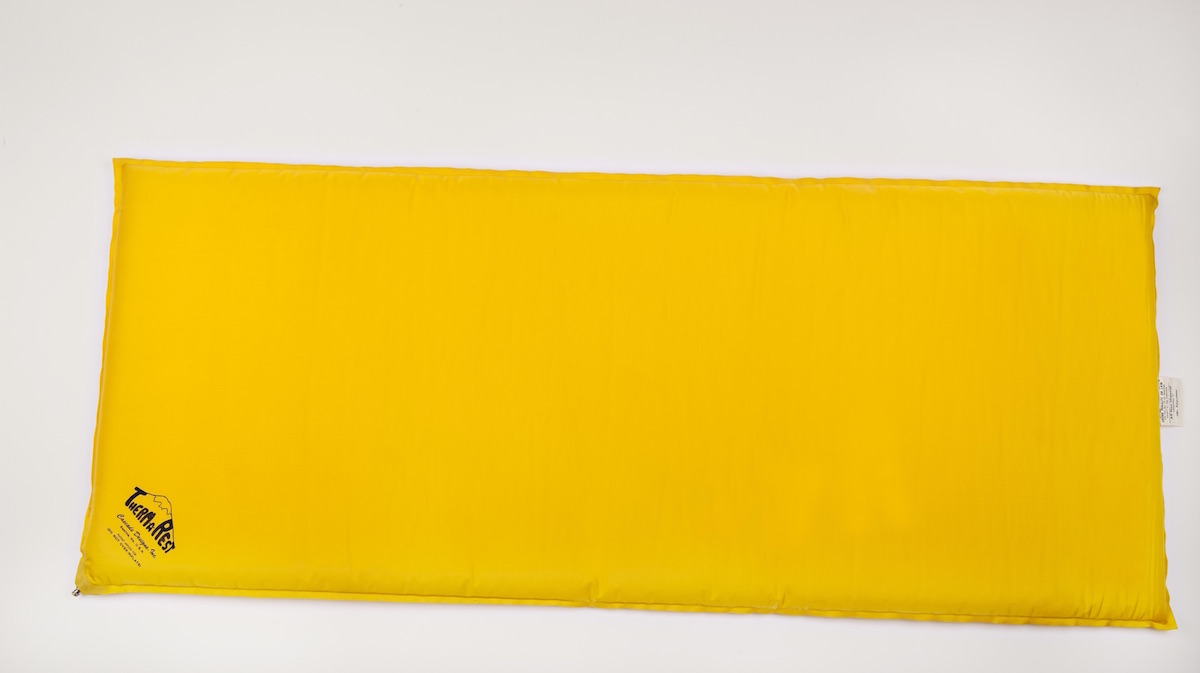
Over 40 years later, the Therm-a-Rest self inflating mattress is still made right here in Seattle, Our Seattle factory cranks out roughly 1,000 to 1,500 self inflating mattresses a day, converting giant foam “buns” into award-winning sleeping pads.
For our customers in Europe, our self-inflating (and air) mattresses are manufactured in County Cork, Ireland, and shipped across Europe.
Locally sourced foam is where it all begins
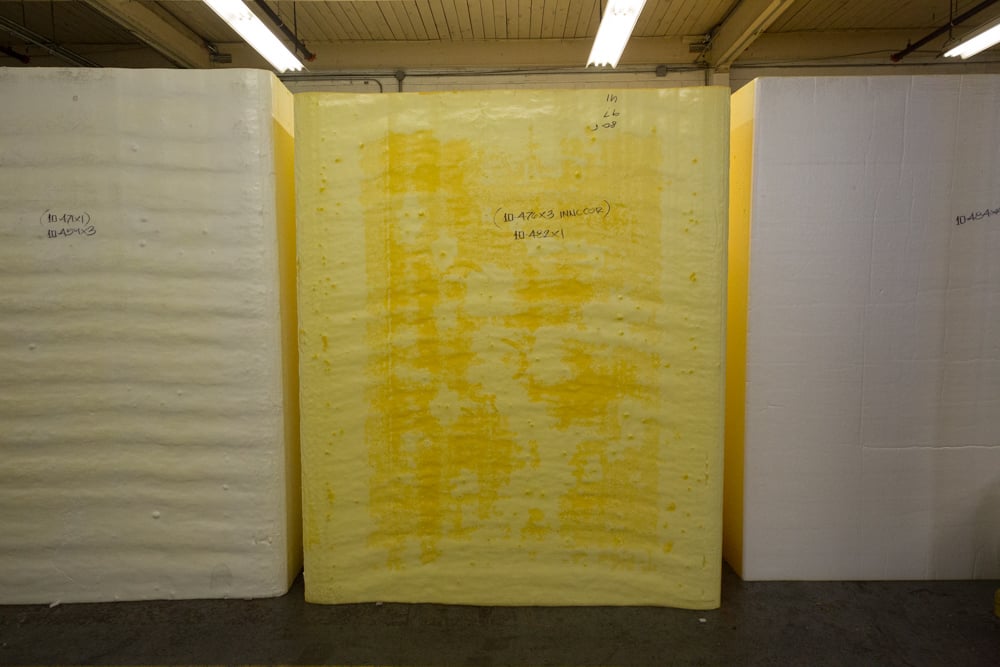
The process starts with the core of the mattress: the foam. We source our foam locally to ensure quality and reduce energy use. We’ve also worked for decades with our suppliers on getting the perfect amount of loft and density, which is key to our comfort and longevity. The foam itself arrives in 40”x 80” x 100” “buns” which we place into our foam cutter, slicing them down into the proper thicknesses, based on the loft of the end mattress.
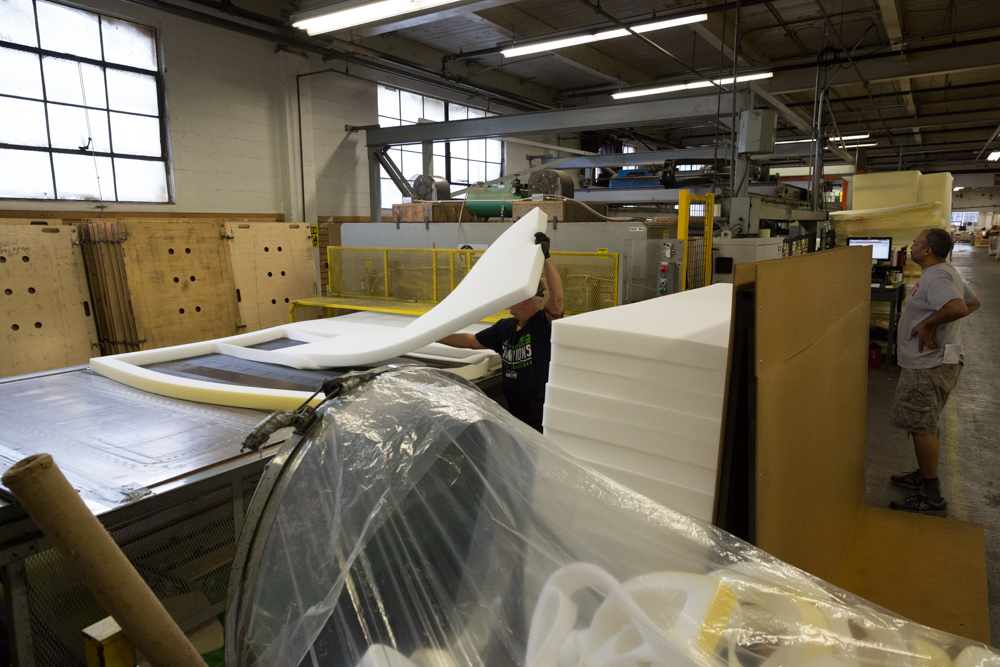
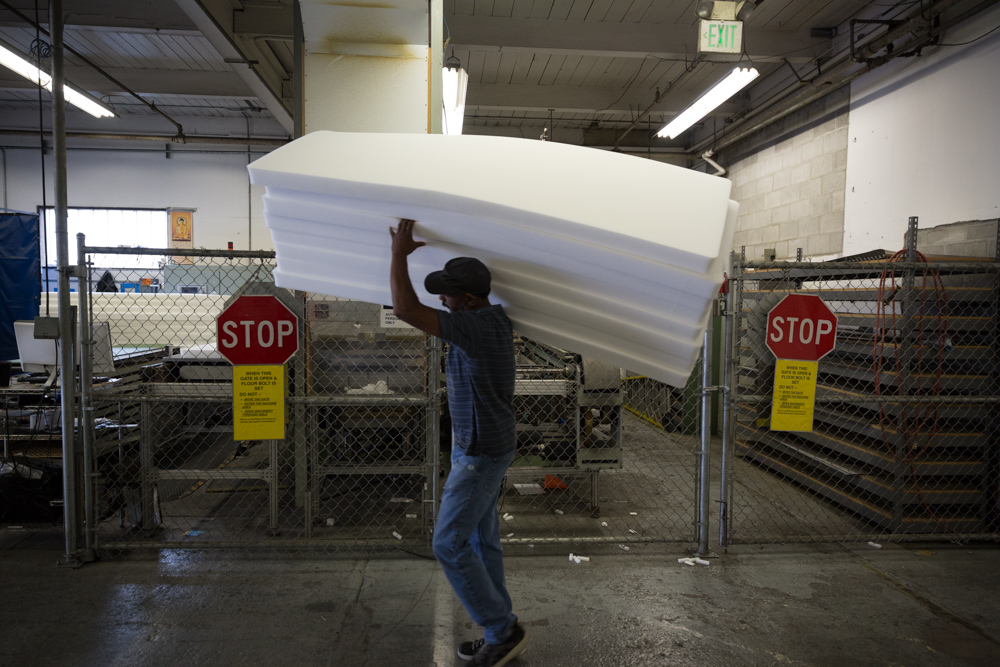
Next, we use a machine dubbed the “Foam Blanker” to punch the foam into one of our many mattress types. Most of these foam silhouettes are then molded, cut and expanded into a strong and lightweight core that has been meticulously designed for backcountry camping. A few are left blank for our solid core foam pads used in our luxurious outdoor beds such as the BaseCamp™. A future Trail Lite, on the other hand, will be passed to another machine that will through punch the foam with diamond-shaped holes, or star-shaped if it’s destined to become, say, a LuxuryMap.
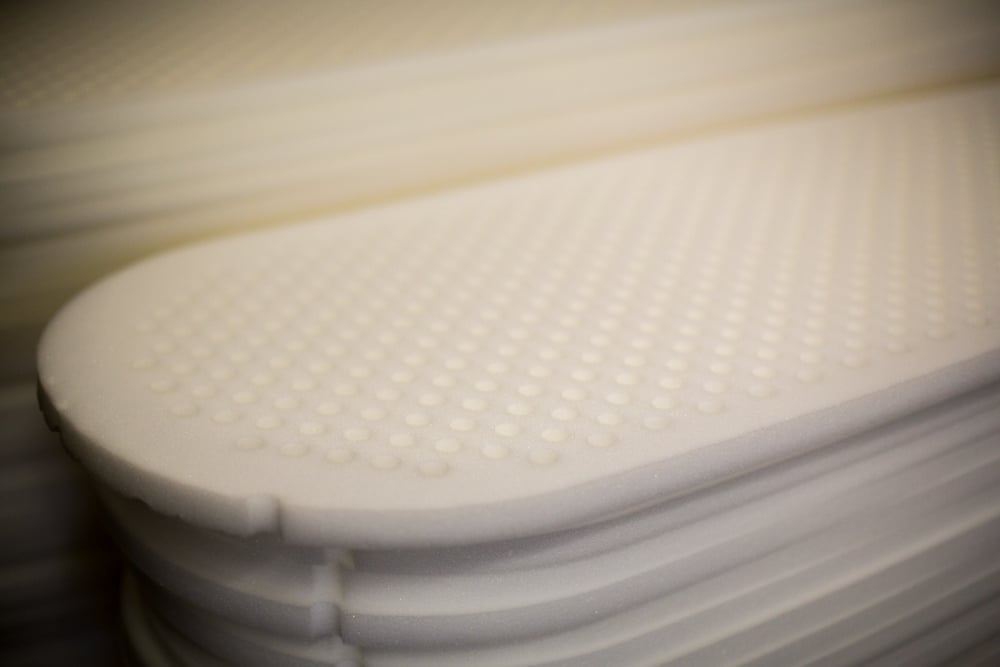 Skew-Cut foam bound for the life of a ProLite.
Skew-Cut foam bound for the life of a ProLite.If the foam is destined to be a part of our ProLite series, then the foam is cut with diagonal holes that have been designed to efficiently slow convective heat loss. Each little piece of foam punched out of these mattresses is then recycled and used in our Compressible Pillows.
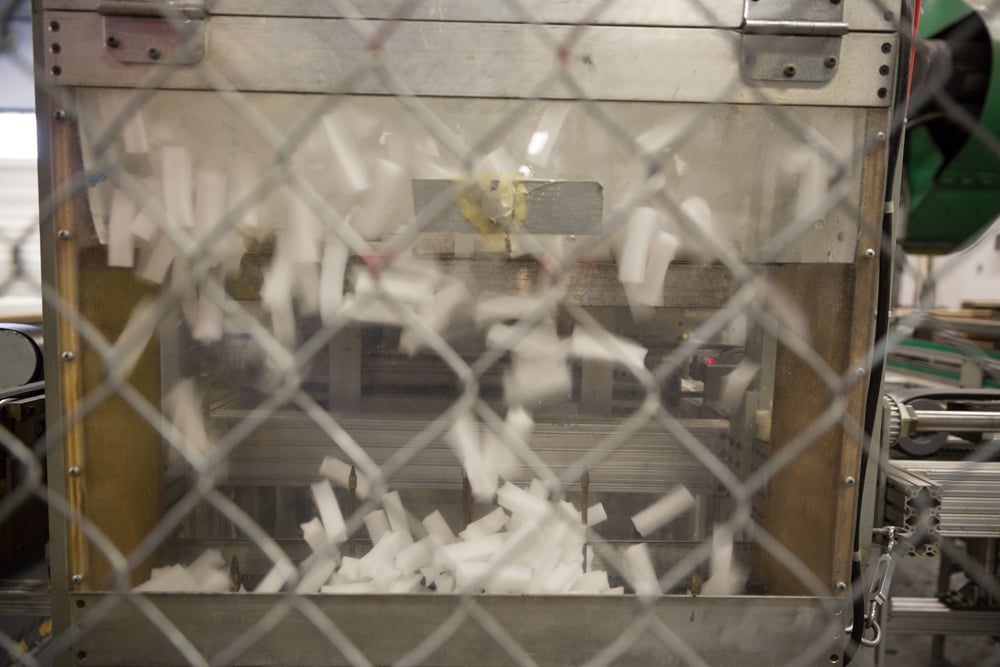 Foam pieces getting saved for use with our Compressible Pillow.
Foam pieces getting saved for use with our Compressible Pillow.The Modern Day Sandwich Press
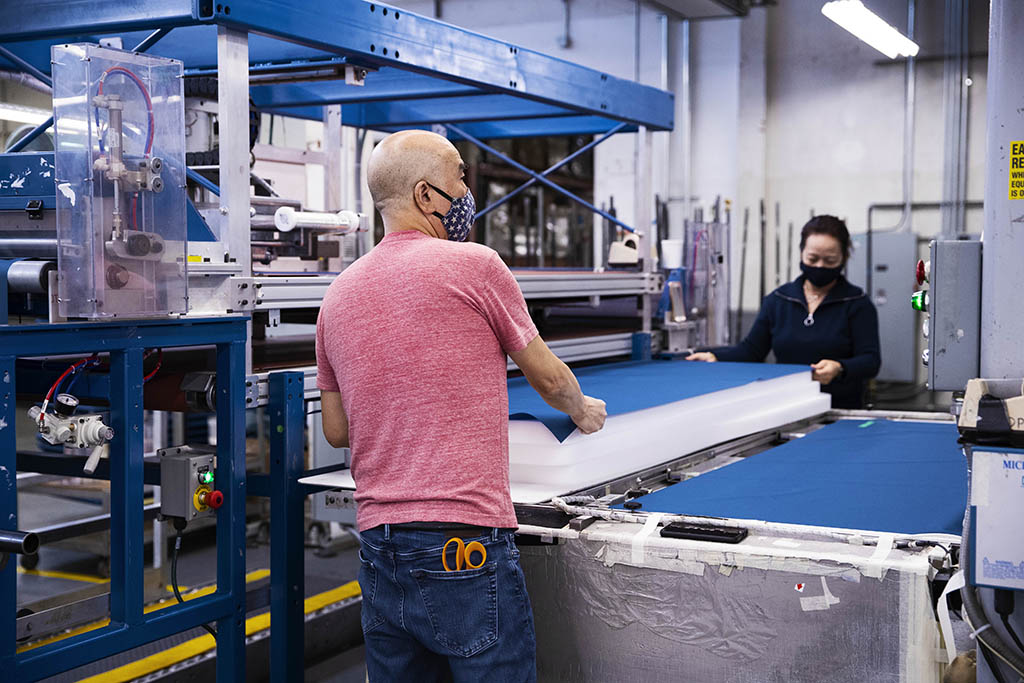
While out earliest prototypes were literally forged on a sandwich press, our current pads are sent to our production presses which use heat to bond the foam with our PU coated fabric, just like that old sandwich press in the 1970’s. These presses have up to 24 different tool-configurations to churn out the many shapes of our award-winning line of self inflating mattresses, each with a special plug that forms the hole where the valve will go.
Once the mattresses are heat-bonded, they need to cool, so we lay them on racks positioned over a series of fans. After 2 to 3 minutes, inflation valves are installed.
Trimmed by Hand with Love
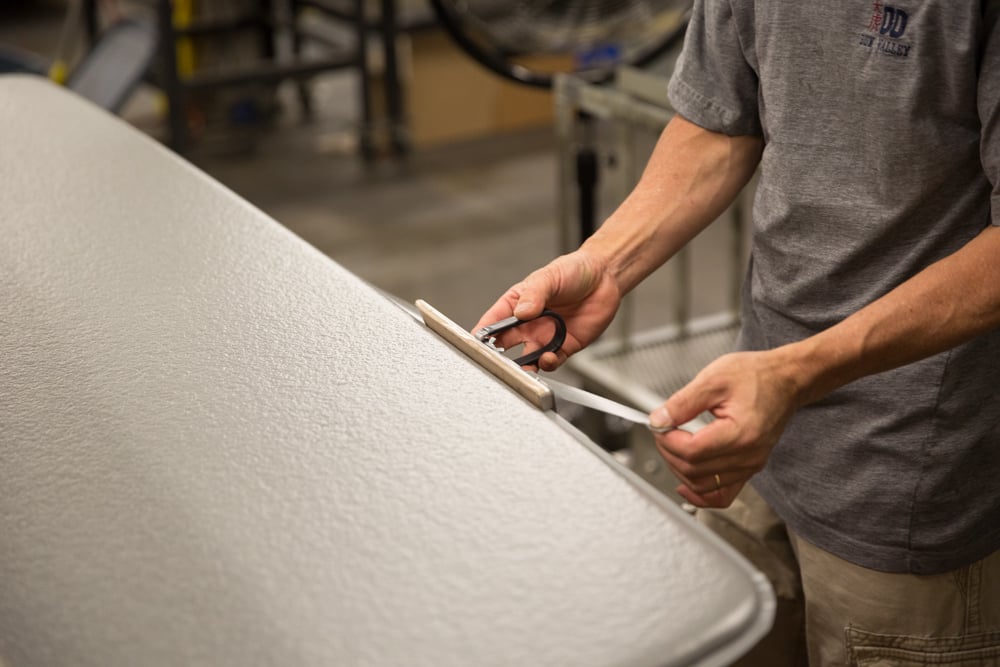
If you were to visit our Seattle factory, you’ll notice that the excess fabric on the edge of each mattress is trimmed by hand with specially designed trimmer, while carefully inspecting each mattress for flaws.
The Final Test
Before any mattress get packaged, it must pass an inflation test. We over-inflate each sleeping pad with a compressed air and stack them in holding area (pun intended) at least overnight. The following day, we inspect each mattress for any loss of pressure.
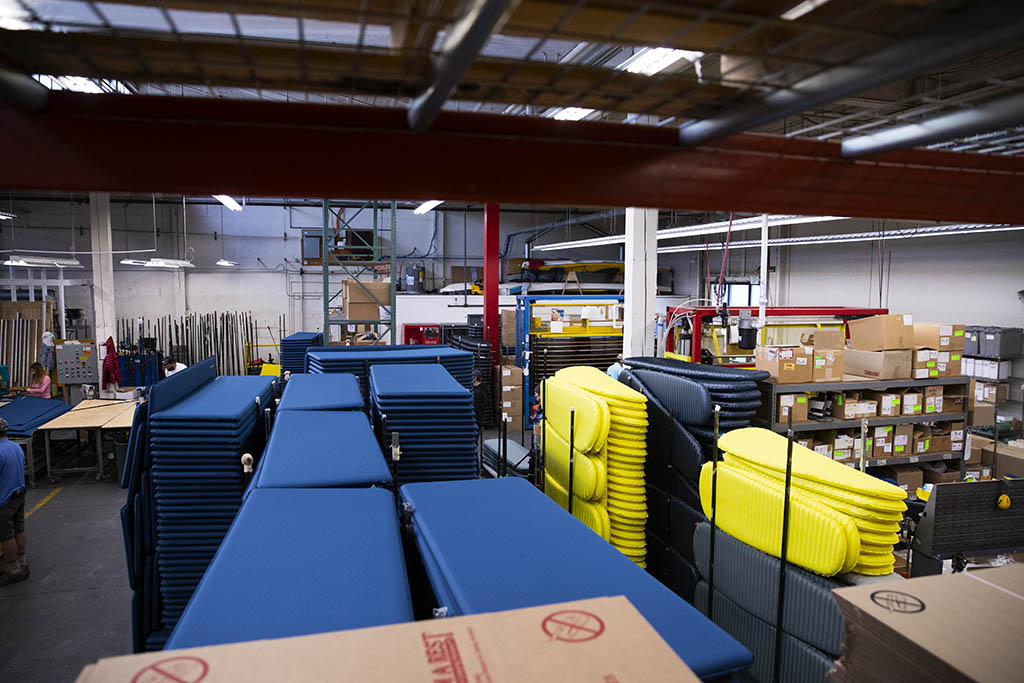
Once the pads have proven themselves, they are deflated (we use a cool multi-level press that can deflate a stack of pads in seconds), valves are sealed and each pad is rolled into it’s packaging, Then it’s off to a begin it’s life as someone’s best camping buddy and a world of adventure.
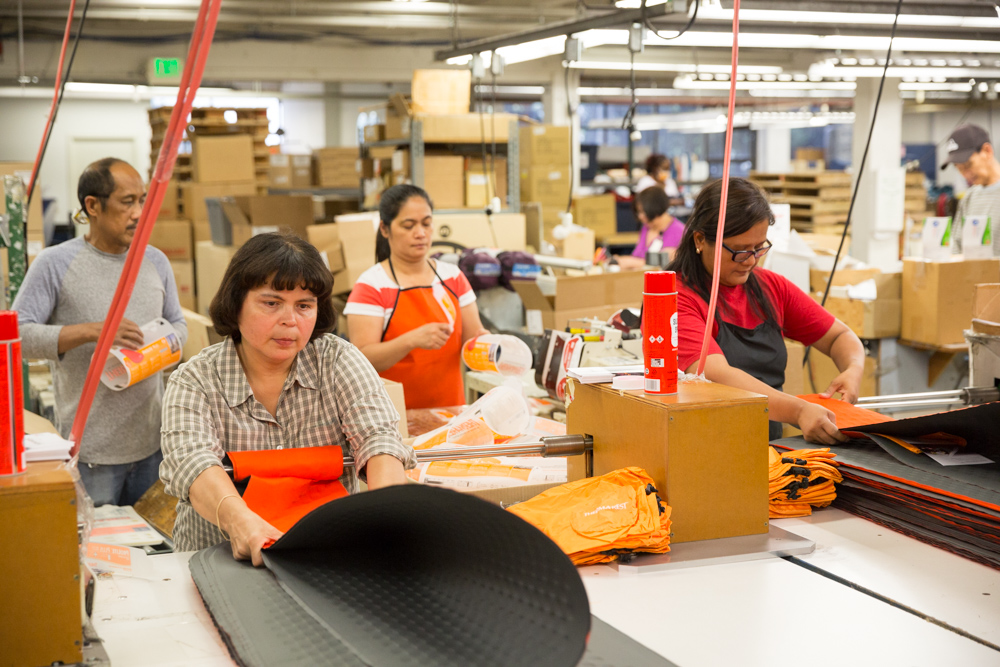
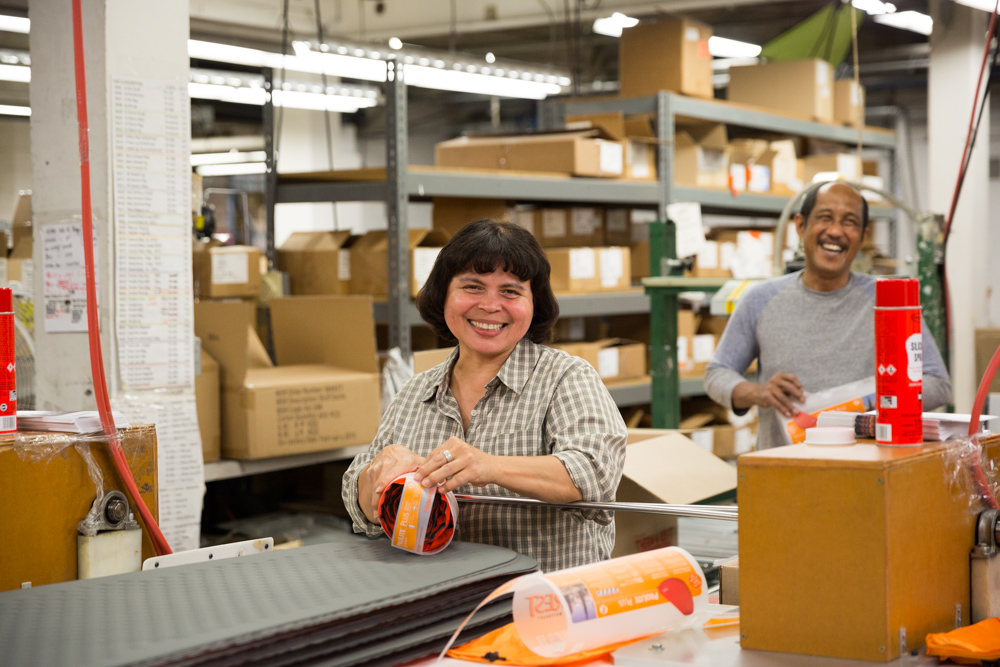
Related Posts:
- How Do Self-Inflating Sleeping Pads Work?
- A Cut Above: StrataCore™ Construction
- Memories from a 1984 Sleeping Pad
Updated. Originally Published March 12, 2020.

